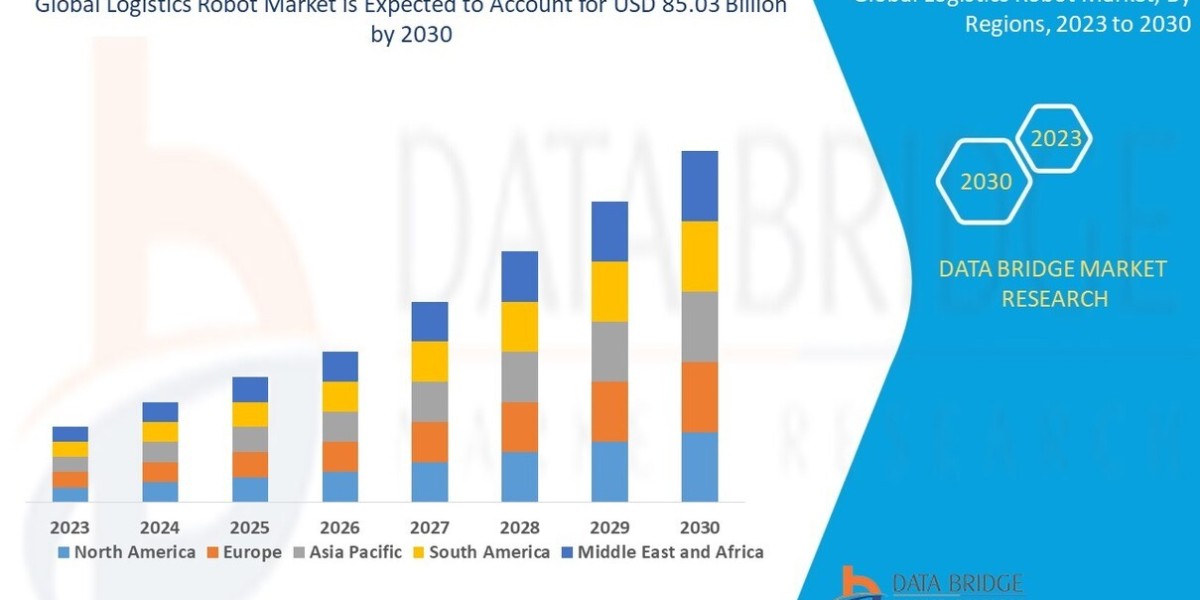Why is the Cluster Headache Syndrome Market Experiencing Robust Growth?
The Cluster Headache Syndrome Market, encompassing diagnostic tools, pharmacological treatments, and non-pharmacological devices for managing cluster headache (CH), a severe primary headache disorder characterized by intense, unilateral pain often accompanied by autonomic symptoms, is experiencing robust and accelerating growth. CH attacks occur in "clusters" lasting weeks or months, followed by remission periods. The market's expansion is fundamentally driven by the increasing prevalence and diagnosis of CH, a significant unmet need for more effective and tolerable acute and preventive therapies, and the recent introduction of novel therapeutic classes.
The global cluster headache market is estimated to be valued at USD 449.3 million in 2025 and is expected to reach USD 694.0 million by 2032, exhibiting a Compound Annual Growth Rate (CAGR) of 6.4% from 2025 to 2032. Other reports project the market to reach USD 1,042.0 million by 2025, growing to USD 1,665.3 million by 2035 at a CAGR of 5.8%. These figures consistently indicate a strong and stable upward trajectory, highlighting significant opportunities within this orphan disease market.
The robust growth is fueled by several critical factors:
Increasing Prevalence and Diagnosis: Greater awareness among healthcare professionals and the public, coupled with improved diagnostic criteria, is leading to earlier and more accurate diagnosis of cluster headache, increasing the patient pool seeking treatment.
Significant Unmet Medical Needs: Many patients with CH, particularly those with chronic or refractory forms, do not achieve adequate relief or experience intolerable side effects from conventional therapies, creating a strong demand for novel and more effective treatments.
Introduction of Novel Therapies (CGRP Inhibitors): The recent approval and increasing adoption of calcitonin gene-related peptide (CGRP) inhibitors (e.g., Emgality/galcanezumab for episodic CH) specifically for cluster headache represent a significant breakthrough, offering a targeted and effective preventive option.
Advancements in Neuromodulation Devices: Development and adoption of non-invasive neuromodulation devices (e.g., non-invasive vagus nerve stimulation (nVNS) devices like gammaCore Sapphire) provide alternative acute and preventive treatment options for patients.
Increased Research and Development (R&D): Pharmaceutical companies and research institutions are actively investing in R&D to explore new drug targets and therapeutic approaches for CH, reflecting the growing understanding of its pathophysiology.
Growing Awareness and Advocacy: Patient advocacy groups and professional organizations are playing a crucial role in raising awareness, promoting early diagnosis, and advocating for better treatment options for CH.
Shift Towards Precision Medicine: A deeper understanding of the neurological mechanisms underlying CH is paving the way for more personalized and targeted therapeutic interventions.
What Cutting-Edge Technologies and Trends are Shaping the Cluster Headache Syndrome Market in 2025?
The Cluster Headache Syndrome Market in 2025 is significantly shaped by the increasing adoption of CGRP inhibitors, the growing prominence of non-invasive neuromodulation devices, and advancements in drug delivery systems for faster and more convenient relief.
By Drug Type, Triptans (e.g., Sumatriptan) are a dominant segment for acute treatment due to their fast action. However, CGRP Inhibitors are the fastest-growing segment, particularly for prevention. Other drug classes include Calcium Channel Blockers (Verapamil), Corticosteroids, Lithium Carbonate, and Anti-Seizure Drugs, used primarily for prevention. By Route of Administration, Oral medications (for prevention) are highly convenient. However, Injectables (for CGRP inhibitors) and Intranasal Sprays (for acute triptan delivery) are crucial for rapid relief. By Therapy Type, Pharmacological treatments hold the largest share. However, Device-Based Therapies (Neuromodulation) are experiencing significant growth. By Distribution Channel, Hospital Pharmacies are key for initial acute management and specialty drugs. Retail Pharmacies and Online Pharmacies also play a role for maintenance therapies. By Region, North America is expected to hold the largest market share due to high awareness, advanced healthcare infrastructure, and early adoption of novel therapies. Europe also represents a substantial market. The Asia-Pacific region is projected to exhibit robust growth, driven by improving healthcare access and increasing diagnosis rates.
Key technological trends and innovations shaping the market in 2025 include:
Expanding Role of CGRP Inhibitors: Further clinical trials are likely exploring the efficacy of CGRP inhibitors in chronic CH, and new CGRP-targeting molecules with different profiles (e.g., oral CGRP antagonists, longer-acting injectables) may emerge.
Advancements in Non-Invasive Neuromodulation: Continued development and refinement of nVNS devices, transcutaneous supraorbital nerve stimulation (t-SNS), and other non-invasive brain stimulation techniques for both acute and preventive treatment, offering drug-free alternatives.
Novel Drug Delivery Systems: Innovations in drug delivery for acute therapies, such as faster-acting intranasal triptan formulations, or potentially microneedle patches for rapid, localized delivery.
Biomarker Discovery: Research into specific biomarkers that can predict treatment response or identify subgroups of CH patients who might benefit from particular therapies, moving towards precision medicine.
Digital Health Integration: Integration of headache diaries, symptom trackers, and medication adherence reminders into smartphone apps, potentially connected to wearable devices, to empower patients and improve self-management.
Deep Brain Stimulation (DBS) Refinements: For extremely refractory chronic CH, advancements in DBS techniques, though a highly invasive last resort, continue to be explored.
Gene-Based Therapies: Early-stage research into gene therapies or other highly targeted molecular interventions for the underlying pathophysiology of CH, though this is a longer-term outlook.
Real-World Evidence (RWE): Increasing collection and analysis of RWE to better understand the effectiveness and safety of existing and new therapies in real-world clinical settings.
What are the Key Challenges and Future Outlook for the Cluster Headache Syndrome Market in 2025 and Beyond?
Despite its robust growth potential, the Cluster Headache Syndrome Market in 2025 faces challenges related to misdiagnosis, the high cost of novel therapies, the need for long-term safety data, and patient adherence to complex treatment regimens.
Challenges in 2025:
Misdiagnosis and Diagnostic Delay: Cluster headache is often misdiagnosed as migraine or other headache types due to overlapping symptoms, leading to significant delays in proper diagnosis and treatment.
High Cost of Novel Therapies: The high price of CGRP inhibitors and neuromodulation devices can limit patient access, especially in healthcare systems with restrictive reimbursement policies.
Side Effects of Conventional Treatments: Traditional preventive treatments like Verapamil and Lithium can have significant side effects, impacting patient tolerability and adherence.
Lack of Awareness in Primary Care: While awareness among neurologists is growing, general practitioners may still lack sufficient knowledge about CH, contributing to diagnostic delays.
Patient Adherence: The chronic and often debilitating nature of CH requires long-term management, and patient adherence to complex medication regimens or consistent device use can be challenging.
Limited Understanding of Pathophysiology: Despite advancements, the exact underlying mechanisms of CH are not fully understood, which complicates the development of universally effective cures.
Regulatory Hurdles for New Device Approvals: Gaining regulatory approval for new neuromodulation devices can be a lengthy and complex process.
Future Outlook:
Broader Access to CGRP Inhibitors: Expansion of reimbursement for CGRP inhibitors for more indications (e.g., chronic CH) and potentially the introduction of biosimilars to reduce costs, improving accessibility.
Integrated Care Models: Development of specialized headache centers and integrated care models that combine pharmacological, device-based, and psychological interventions for a holistic approach to CH management.
Early Intervention Strategies: Increased focus on identifying patients at risk of chronic CH and implementing early preventive strategies to mitigate disease progression.
Digital Therapeutics and Remote Monitoring: Growing role of digital therapeutics (software-based interventions) and remote monitoring tools to support patients, track symptoms, and enhance medication adherence.
Further Research into Etiology: Continued research into the genetic and environmental factors contributing to CH will pave the way for more targeted and potentially curative therapies.
Global Expansion of Diagnostics: Efforts to improve diagnostic capabilities and increase awareness in underserved regions to ensure timely diagnosis and treatment for a wider patient population.
Combination Therapies: Exploration of optimal combination strategies involving different drug classes and devices to achieve synergistic effects and better outcomes for refractory cases.
In conclusion, the Cluster Headache Syndrome Market in 2025 is undergoing a transformative period, driven by breakthroughs in targeted therapies and device-based interventions. While confronting challenges related to diagnosis, cost, and long-term management, the future promises a more precise, personalized, and effective treatment landscape that aims to significantly improve the quality of life for individuals suffering from this excruciating condition.








